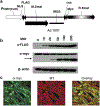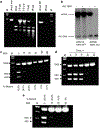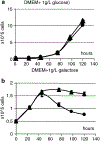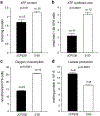Selective elimination of mutant mitochondrial genomes as therapeutic strategy for the treatment of NARP and MILS syndromes
- PMID: 18256697
- PMCID: PMC10416612
- DOI: 10.1038/gt.2008.11
Selective elimination of mutant mitochondrial genomes as therapeutic strategy for the treatment of NARP and MILS syndromes
Abstract
Mitochondrial diseases are not uncommon, and may result from mutations in both nuclear and mitochondrial DNA (mtDNA). At present, only palliative therapies are available for these disorders, and interest in the development of efficient treatment protocols is high. Here, we demonstrate that in cells heteroplasmic for the T8993G mutation, which is a cause for the NARP and MILS syndromes, infection with an adenovirus, which encodes the mitochondrially targeted R.XmaI restriction endonuclease, leads to selective destruction of mutant mtDNA. This destruction proceeds in a time- and dose-dependent manner and results in cells with significantly increased rates of oxygen consumption and ATP production. The delivery of R.XmaI to mitochondria is accompanied by improvement in the ability to utilize galactose as the sole carbon source, which is a surrogate indicator of the proficiency of oxidative phosphorylation. Concurrently, the rate of lactic acid production by these cells, which is a marker of mitochondrial dysfunction, decreases. We further demonstrate that levels of phosphorylated P53 and gammaH2ax proteins, markers of nuclear DNA damage, do not change in response to infection with recombinant adenovirus indicating the absence of nuclear DNA damage and the relative safety of the technique. Finally, some advantages and limitations of the proposed approach are discussed.
Figures





References
-
- Schapira AH. Mitochondrial disease. Lancet 2006; 368: 70–82. - PubMed
Publication types
MeSH terms
Substances
Grants and funding
LinkOut - more resources
Full Text Sources
Other Literature Sources
Medical
Research Materials
Miscellaneous

